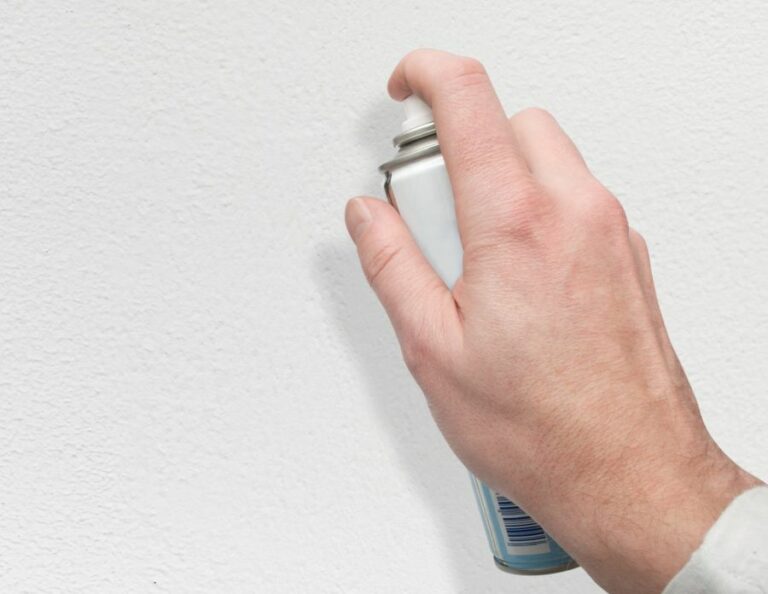Used Paint Cans Safe Storage Methods. What Pros Say
Storing used paint cans safely can be a bit of a puzzle, especially if you’re not sure about the potential risks and proper methods. We’ve got your back! In this discussion, we’ll be diving into safe storage methods for used paint cans that will allow you to preserve the leftover paint and protect both your property and the environment.
Used paint cans: safe storage methods:
Used paint cans should be stored in airtight, clean metal or plastic containers, away from extreme temperature fluctuations, direct sunlight, and moisture. Maintain a moderate temperature range (50-80°F or 10-27°C), and ensure proper ventilation to prevent harmful fumes. Practice organization, labeling, and regular maintenance for safety and environmental conservation.

Discover the crucial steps for the safe storage of used paint cans, ensuring a clutter-free space while protecting the environment. Don’t let leftover paint become a hazard. Read on for guidance on proper containment, labeling, and disposal methods, making your paint storage a breeze.
Contents
- 1 Secure Storage Techniques for Used Paint Cans
- 2 Optimal Leftover Paint Storage Solutions
- 3 Safe Paint Can Storage Practices
- 4 Storing Paint Cans Safely in the Garage
- 5 Keeping Paint Cans Securely Inside the Home
Secure Storage Techniques for Used Paint Cans
Proper disposal and storage of used paint cans are essential not only for ensuring the safety of your home but also for protecting the environment. Paints contain chemicals that can be harmful if not properly managed.
• Importance of Proper Storage
The main reason for ensuring the proper storage of used paint cans is to prevent the paint from drying out or becoming contaminated. Doing so not only saves you money but also helps in keeping the paint in good condition for future use.
Additionally, proper storage keeps your home tidy, prevents accidents, and contributes to environmental conservation efforts.
• Key Aspects to Consider
When storing used paint cans, consider the following aspects:
- Container
- Location
- Temperature
- Moisture
- Ventilation
– Proper Container
Ensure the paint cans are thoroughly sealed to prevent contact with air, moisture, and other contaminants. Use the original can, if possible.
If not, transfer the paint to a smaller, airtight container. Ensure the container is made from a suitable material, like plastic or metal, capable of preventing air and moisture penetration.
– Optimal Storage Location
Select a suitable location away from extreme temperature fluctuations, direct sunlight, and moisture. Storing paint cans off the floor or on a raised platform is recommended, preventing contact with any water that may accumulate.
– Temperature Control
Most paints, especially latex and oil-based varieties, can be sensitive to temperature extremes. Store your used paint cans in a location with a consistent, moderate temperature range of 50-80F (10-27C). Avoid freezing or excessively high temperatures, as they can cause the paint to become unusable.
– Moisture Management
High humidity levels can cause the paint to degrade or become lumpy. The ideal location should be free from direct contact with water, such as leaks or moisture sources. Additionally, placing a desiccant such as silica gel packets inside of the storage area can help absorb any excess moisture.
– Adequate Ventilation
Storing the used paint cans in a well-ventilated area is essential for preventing the accumulation of harmful paint fumes, especially from solvent-based paints. Choose a location with proper air circulation, such as a garage, basement, or utility room.
• Additional Tips for Safe Storage
Beyond the previously mentioned aspects, practice the following methods to enhance the safety and efficiency of your used paint can storage process:
– Labeling
Label the paint cans with the color, type, brand, and date of purchase or use. Doing so allows easy identification of the paint for future applications, inventory management, and proper disposal.
– Organization
Organize the paint cans by type or usage frequency, enabling easy access without creating clutter. Keep inflammable paints separate from other varieties and store them in a location away from heat sources to prevent accidental fires.
– Regular Maintenance
Inspect the stored paint cans periodically, checking for any leakage, rust, or damage to the containers. Dispose of the paint appropriately if its condition has deteriorated or it has become unusable.
– Recycling or Responsible Disposal
When the paint is no longer needed or is past its prime, recycle or dispose of the paint in an environmentally friendly manner. Contact your local municipality or a paint recycling center for information on paint disposal and recycling options.
• Personal Recommendations and Conclusion
From personal experience, it is crucial to practice diligence when storing used paint cans. The following recommendations can yield a safe and environmentally-conscious storage process:
- Use airtight, clean metal or plastic containers for storing paint.
- Keep the paint storage area organized, clean, and well-ventilated.
- Prioritize temperature control, moisture management, and proper labeling.
By following the safe storage methods detailed above, you can prevent accidents, maintain paint quality, and contribute to conserving the environment. Always remember that proper storage and disposal of used paint cans are crucial to ensuring a safe and sustainable home.
Optimal Leftover Paint Storage Solutions
Storing leftover paint properly is essential to ensure its longevity and usability for future projects. By following the correct storage techniques, you can save money and resources while also being eco-friendly.
• Choosing the Right Container
Selecting an appropriate container is crucial for preserving paint quality. When considering containers, keep the following factors in mind:
– Airtight Seal
An airtight seal is necessary to prevent paint from drying out or being exposed to contaminants. Make sure the container lid closes securely and forms a tight seal. If the original paint can is still in good condition, you can use it to store leftover paint.
Otherwise, consider using a clean, airtight plastic or glass container specifically designed for storing paint.
– Size
Choose a container that closely matches the volume of the leftover paint. This will minimize the amount of air in contact with the paint, reducing the risk of drying, clumping, or spoilage. Using a smaller container also helps save storage space.
• Labeling Your Paint Containers
Proper labeling is essential for easy identification of stored paint. Make sure to include the following information on your labels:
– Paint Type and Color
Clearly mention the paint type (e.g., water-based, oil-based, latex) and the specific color. This will save time when you need to locate the paint for touch-ups or a new project.
– Purchase Date and Brand
By indicating the purchase date, you can keep track of the paint’s shelf life and determine its usability. Additionally, note down the paint’s brand, as different brands may have different storage requirements or compatibility with other products.
– Room or Project Details
Include details on the specific room or project for which the paint was originally used, such as the room name, wall, or object that was painted. This will come in handy when carrying out future touch-ups or if you decide to repaint.
• Storing Paint in a Suitable Environment
The environment in which you store paint is a determining factor in its shelf life. Consider the following factors when selecting a storage location:
– Temperature Control
Temperature fluctuations can adversely affect paint quality. To maintain optimal paint condition, store it in an area with a consistent temperature, ideally between 60-80°F (15-27°C) according to EPA guidelines. Avoid storing paint in unheated sheds, garages, or attics, as they are prone to extreme temperatures.
– Humidity Control
High humidity levels can cause paint to become moldy and spoil. Store paint in a dry, low-humidity area, preferably indoors, where it will not be exposed to moisture.
– Ventilation and Safety
Proper ventilation is essential when storing paint, especially oil-based paints, which can be highly flammable. Store paint in a well-ventilated area, away from heat sources or flame. Additionally, avoid storing paint near children or animals for safety reasons.
• Preparing Paint for Long-Term Storage
To help prolong the shelf life of your paint, follow these simple steps before sealing the container:
– Stirring
Thoroughly stir the paint to ensure its components are well-mixed. This will minimize separation and consistency issues when you need to use it again. Make sure to use a clean stirrer to avoid introducing contaminants.
– Straining
Strain the paint to remove any clumps, debris, or dried bits. You can do this by placing a paint strainer, cheesecloth, or fine mesh cloth over the opening of a clean container and pouring the paint through it.
– Clean Container Edges
Remove any excess paint from the container’s edges, as it could dry, harden or create an improper seal. Use a clean cloth or paper towel to wipe away any residue.
– Container Inversion
Once the lid is securely fastened, carefully invert the container for a short period. This will create a paint layer on the inside of the lid, which can act as a barrier to protect against air leaks and prevent the paint from drying out. Remember to store the container right-side-up after the inversion.
• Periodic Inspection and Maintenance
Regularly inspect your stored paint to ensure its quality and usability. Open the container and check for any signs of spoilage, such as mold, unpleasant odors, or separation. If you come across these issues, it is best to dispose of the paint safely, following appropriate guidelines for hazardous waste disposal.
• Final Thoughts
Storing leftover paint can be a cost-effective and eco-friendly practice for household projects or professional endeavors. By choosing the right container, labeling it properly, and following best storage practices, you can significantly extend your paint’s shelf life and maintain its quality for future use.
Step | Description |
|---|---|
1 | Seal the paint can: Clean the rim of the paint can with a brush or cloth to remove any excess paint. |
2 | Place a piece of plastic wrap over the opening of the paint can before placing the lid back on. This will create an airtight seal. |
3 | Gently hammer the lid down: Use a rubber mallet to tap the lid in place, ensuring an airtight seal. Do not use excessive force, as this could warp the lid. |
4 | Store the paint can upside down: By storing the paint can upside down, you create an additional air-tight seal and prevent the paint from drying out. |
5 | Label the paint can with important information, such as color name, paint code, date of purchase, and area in which it was used. |
6 | Keep the paint in a cool, dry, and dark place away from extreme temperatures and direct sunlight. Basements and garages are typical storage spaces for leftover paint. |
Safe Paint Can Storage Practices
When it comes to storing paint cans safely, there are several factors to consider. Proper storage ensures the longevity of the paint, maintains its quality, and prevents any potential hazards.
• Optimal Temperature for Paint Storage
One of the most crucial elements of paint storage is the temperature. Paint should be stored in a cool, dry place to maintain its quality and prevent freezing or separation of components. The ideal temperature for storing paint is between 60-80°F (roughly 15-27°C).
Exposure to extreme temperatures can cause the paint to become thick and clumpy or separate, rendering it unusable. In colder climates, it’s essential to avoid storing paint cans in unheated areas such as sheds or garages to prevent freezing temperatures.
Alternatively, in hot climates, it’s crucial to keep paint away from direct sunlight or heat sources as it can cause the paint to cure inside the can, making it difficult to use.
• Proper Ventilation for Paint Storage
Good ventilation is a vital aspect of paint storage safety. Storing paint cans in a well-ventilated area can help prevent the buildup of fumes that may pose health hazards.
A well-ventilated storage space is necessary, especially for oil-based or solvent-based paints, which produce volatile organic compounds (VOCs) that can be harmful when inhaled.
It’s essential to store paint cans away from living spaces or areas with poor ventilation, such as closets or basements.
• Fire Safety Tips for Storing Paint
Paints can be flammable, particularly oil-based or solvent-based varieties. Therefore, fire safety is a crucial consideration when storing paint cans. Here are some fire safety tips to follow:
– Store Away from Flames and Heat Sources
Ensure that the paint storage area is a safe distance away from any open flames or heat sources that could cause the paint to ignite. This includes furnaces, water heaters, stoves, or any other appliances that produce heat.
– Use a Flammables Cabinet
When storing larger quantities of paint, particularly flammable varieties, investing in a flammable cabinet designed explicitly for volatile materials is an excellent safety measure. These cabinets are designed to contain a fire and prevent its spread.
Make sure to follow all the manufacturer’s guidelines and regulations for properly using these cabinets.
– Keep Fire Extinguishers Nearby
Having fire extinguishers readily available near the paint storage area is another essential safety measure. Ensure that those who have access to the storage area are familiar with the proper use of fire extinguishers.
• Organizing Your Paint Storage
Organizing your paint storage can not only improve safety but also help maintain the quality and usability of your paint. Here are some tips for organizing your paint storage:
– Label Paint Cans
Clear labeling of paint cans can help identify the color, type of paint, and purchase date. This can be particularly helpful when trying to determine the age and condition of the paint.
– Store by Type and Size
Organize your paint cans by grouping them according to their type (e.g., latex, oil-based) and size. This can make it easier to locate the paint you need while also ensuring proper storage conditions for different types of paint.
– Store Unused and Opened Cans Separately
Separate unused, unopened paint cans from opened cans that have been partially used. This will help prevent accidental spills and preserve the quality of the unused paint.
– Keep a Paint Inventory
Creating a paint inventory list can help you keep track of the paint cans you have, their age, and when they need to be disposed of properly. Remember that paints have a shelf life, typically ranging from 2-10 years, depending on the type and storage conditions.
• Disposing of Old or Unused Paint
If you have old or unused paint that is no longer needed, ensure it is disposed of correctly. Many local hazardous waste centers or recycling facilities accept paint for proper disposal. Some locations may even offer paint recycling programs, which can be an environmentally friendly alternative to disposal.
Check with your local waste management or recycling center for specific guidelines on paint disposal.
In conclusion, safely storing paint cans involves considering temperature, ventilation, fire safety, and organization. By considering these factors, you can maintain the quality and usability of your paint, prevent potential hazards, and ensure a well-organized storage area.
Step | Description |
|---|---|
1. | Ensure the paint can lid is tightly sealed to prevent leakage or air penetration. |
2. | Store paint cans in a cool, dry place, away from direct sunlight and heat sources. |
3. | Keep paint cans on a sturdy shelf or in a storage cabinet to prevent accidental spills or falls. |
4. | Store paint cans away from potential ignition sources, such as electrical outlets or open flames. |
5. | Label the paint cans with relevant information such as color name, paint type, and purchase date. Ensure the label is visible for easy identification. |
6. | Dispose of old or unused paint cans according to your local hazardous waste regulations. |
Storing Paint Cans Safely in the Garage
As a homeowner or DIY enthusiast, chances are that you may have accumulated several paint cans over the years. The question that often arises is, “Is it safe to store paint cans in the garage?”
• Potential Risks of Storing Paint Cans in the Garage
– Fire Hazards
One significant risk associated with storing paint cans in the garage is the potential for fire. Most paint products, particularly oil-based paints, are classified as flammable and can easily ignite if exposed to an open flame, spark, or high heat.
Garages are commonly used to store other flammable materials like gasoline, propane, and solvents, which may further increase the risk of fire incidents.
– Air Quality and Health Concerns
Paints, especially older ones, often contain volatile organic compounds (VOCs) that evaporate easily into the air. This process continues even when the paint has dried.
As a result, VOCs may reduce air quality in your garage and lead to health issues, including headaches, eye irritation, and respiratory problems. Storing paint cans in a poorly ventilated garage can exacerbate these issues.
– Exposure to Extreme Temperatures
Most paints should not be exposed to extreme temperatures. Storing paint cans in a garage that experiences significant temperature fluctuations can degrade the paint’s quality, causing it to separate or become unusable. This can result in wasted paint and money.
• Proper Storage Guidelines for Paint Cans in the Garage
– Choose a Safe Location
If you must store paint cans in your garage, select a location with limited access to children and pets. Ensure that the area is free from high heat sources like furnaces, water heaters or portable heaters, and avoid storing paint near sparks or open flames.
– Use Appropriate Shelving
It’s essential to use sturdy shelves that can support the weight of the paint cans. Ideally, shelves should be made from non-combustible materials like metal to reduce the risk of fire. Do not stack paint cans on the floor, as this may lead to leaking or spillage.
– Maintain Proper Ventilation
Ensure your garage has adequate ventilation to dissipate any VOCs released by paint cans. Open windows, install exhaust fans or use an air purifier to improve air circulation and minimize the impact of VOCs on air quality.
– Properly Seal Paint Cans
Before storing paint cans, make sure they are tightly sealed to prevent VOCs’ evaporation and reduce the risk of spills. Use a rubber mallet to tap the lid securely into place, ensuring it’s entirely closed. Use a plastic paint can lid to provide an additional seal.
– Monitor Temperature Conditions
It’s best to store paint in a stable environment with a temperature range between 50 and 80 degrees Fahrenheit or the range specified by the paint manufacturer. Install a temperature gauge in your garage to monitor conditions and ensure the paint’s longevity.
• Safe Disposal Methods for Unused or Old Paint Cans
– Reuse or Donate Unwanted Paint
If you have good-quality paint in the cans, consider reusing it for another project or donating it to a local community project, renovation organization, or theater group.
– Proper Disposal of Old or Unusable Paint
If you have unusable paint, consult your local government or waste management facility for recommendations on proper disposal or recycling methods. Many communities offer paint and hazardous waste collection events throughout the year.
– Dry Out Paint for Disposal
If the paint is latex-based, you can dispose of it in the regular trash, provided you dry it out completely. To do this, open the paint can and let it air dry or mix it with an absorbent material like sawdust or cat litter. Once it’s solidified, place it in a plastic bag, seal it, and discard it with your regular trash.
In conclusion, while it is possible to store paint cans in your garage safely, it is essential to follow proper storage guidelines and address potential risks. Proper paint storage ensures the longevity of your paint and reduces the chance of fire hazards, VOC-related health issues, and material waste.
Keeping Paint Cans Securely Inside the Home
Storing paint cans in the house can raise several safety concerns, including the risk of fire, poisoning, and environmental pollution. Understanding these risks and taking appropriate precautions will ensure that paint cans are stored safely and responsibly.
• Potential Hazards of Keeping Paint Cans in the House
– Fire Risk
One of the main concerns about keeping paint cans in the house is the potential fire hazard. Some types of paint, particularly oil-based and alkyd paints, contain flammable solvents. If paint cans are not properly sealed or are exposed to a heat source, this increases the risk of a fire.
Several precautions can be taken to reduce the fire risk associated with keeping paint cans in the house:
- Ensure paint cans are tightly sealed: In addition to reducing the risk of fire, this will also help prolong the paint’s shelf life.
- Store paint cans away from heat sources: This includes placing them in a cool, dry area away from HVAC systems, water heaters, and other appliances that generate heat.
- Dispose of paint-soaked materials safely: Rags and brushes used with these flammable paints can still pose a risk. It’s important to allow them to dry properly before disposal or store them in a properly sealed container.
– Poisoning
Many paints, especially older ones, may contain toxic substances such as lead, mercury, or volatile organic compounds (VOCs). These substances can pose serious health risks if ingested or inhaled. To minimize the risk of poisoning, consider the following practices:
- Store paint cans out of reach of children and pets: Ensuring paint cans are in a secure location will decrease the likelihood of accidental ingestion.
- Properly vent the storage area: This can help reduce the concentration of any fumes that may be released from paint cans.
- Choose low-toxicity paints: Opt for water-based, low-VOC, or low-odor paints when possible. These paints often have lower levels of potentially dangerous chemicals.
– Environmental Pollution
Storing paint cans in the house can also contribute to environmental pollution if not properly managed. Improper disposal of paint cans and their contents can contaminate groundwater, soil, and ecosystems. Here are some steps to mitigate the potential environmental impact of paint storage:
- Store paint cans on a spill containment platform: This will prevent any leaks from spreading and contaminating surrounding areas.
- Recycle or donate unused paint: If you have leftover paint, consider donating it to a local charity, school, or recycling program, such as PaintCare.
- Dispose of paint cans properly: Check with your local household hazardous waste facility for guidelines on disposing of paint cans, as regulations may differ depending on the type of paint and location.
• Recommendations for Safe Paint Can Storage
Based on the potential hazards discussed above, I recommend the following practices for safely storing paint cans in your home:
- Store paint cans in a well-ventilated, cool, dry area that is out of reach of children and pets. This area should also be away from heat sources and ignition risks.
- Always ensure paint cans are properly sealed to prevent spills and fumes and to prolong shelf life.
- Choose low-toxicity and environmentally-friendly paints whenever possible.
- Follow proper disposal and recycling practices for paint cans and paint-soaked materials such as rags and brushes.
By adhering to these best practices, you can safely store paint cans in your home while minimizing the risks associated with fire, poisoning, and environmental pollution.







